Thomas Chalkley Palmer, 1860 - 1934
by Brian Stevenson
Last updated July, 2021
T. Chalkley Palmer was an expert amateur botanist, with particular interests in studies of the Isoetaceae (quillworts, an ancient plant family of which only one genus, Isoetes, survives), euglenoids of the genus Trachlomonas, and diatoms. He lived for almost his entire life in Media, Pennsylvania, USA, then on the outskirts of Philadelphia.
Palmer (evidently, "Chalkley" to his friends) was a chemist by trade, specializing in the commercial production of dyes. Those skills proved to be useful in some of his scientific studies. An important example is Palmer's contribution to the conclusion that diatoms photosynthesize, converting light and carbon dioxide into oxygen. He knew that hematoxylin turns carbon dioxide-saturated water a "yellow with a tinge of brown" brown, whereas oxygen will turn the solution "a very deep blood red". In 1897, Palmer published a demonstration of the oxygen-producing ability of the diatom Eunotia major, wherein pure cultures exposed to strong light gave this result, "the color … deepens rapidly, showing oxidation; and this action continues until the color is quite blood-red, or even, in case much lime is in the water, until bluish lakes are formed in clouds. The ceasing of the action may, conceivably, be determined by exhaustion of every trace of carbon dioxide, but data on this head are wanting as yet. At all events the evolution of gas goes on long after the color reaction of carbon dioxide has disappeared".
Palmer was a member and President of the Academy of Natural Science of Philadelphia, a Fellow of the Royal Microscopical Society, and member of numerous other scientific and professional societies.
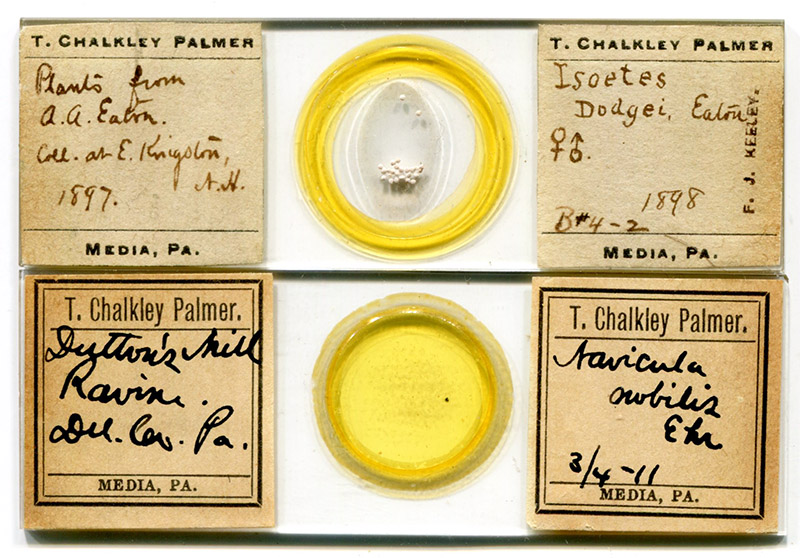
Figure 1.
Microscope slides that were produced by Chalkley Palmer. The upper slide was prepared in 1898, and contains specimens of megaspores (female) and microspores (male) from the quillwort Isoetes dodgei. Palmer's notes indicate that he received the specimens from the plant's discoverer Alvah A. Eaton (1865-1908). The lower slide contains a strew of diatoms that was collected in 1911 from Dutton's Mill Ravine, Delaware County, Pennsylvania, near Palmer's home.
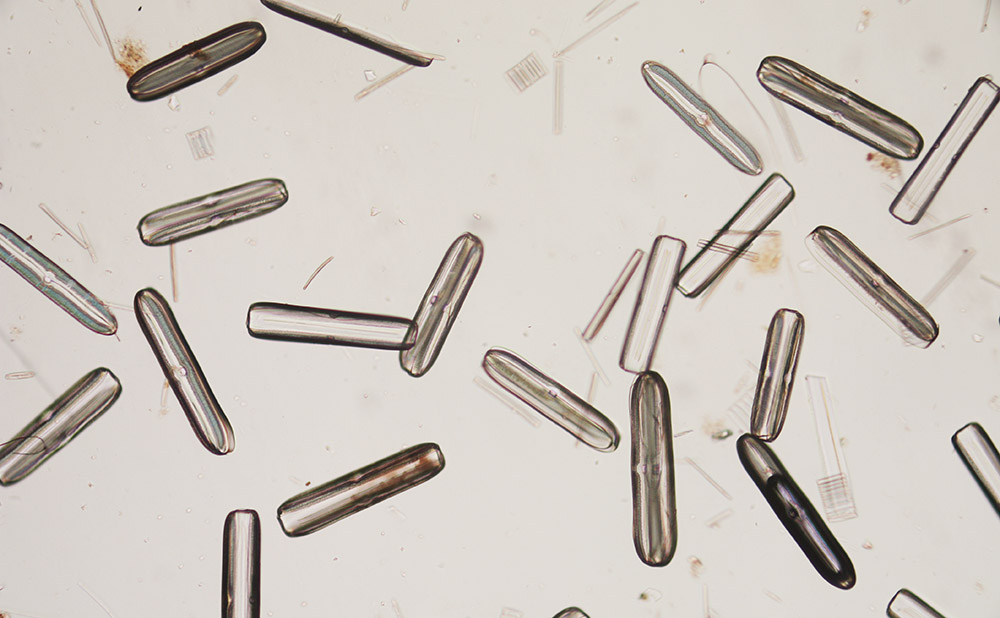
Figure 2.
Diatoms from Dutton's Mill Ravine, Pennsylvania, mounted by T.C. Palmer (see Figure 1). Imaged with a 10x objective lens and a C-mounted digital SLR camera.
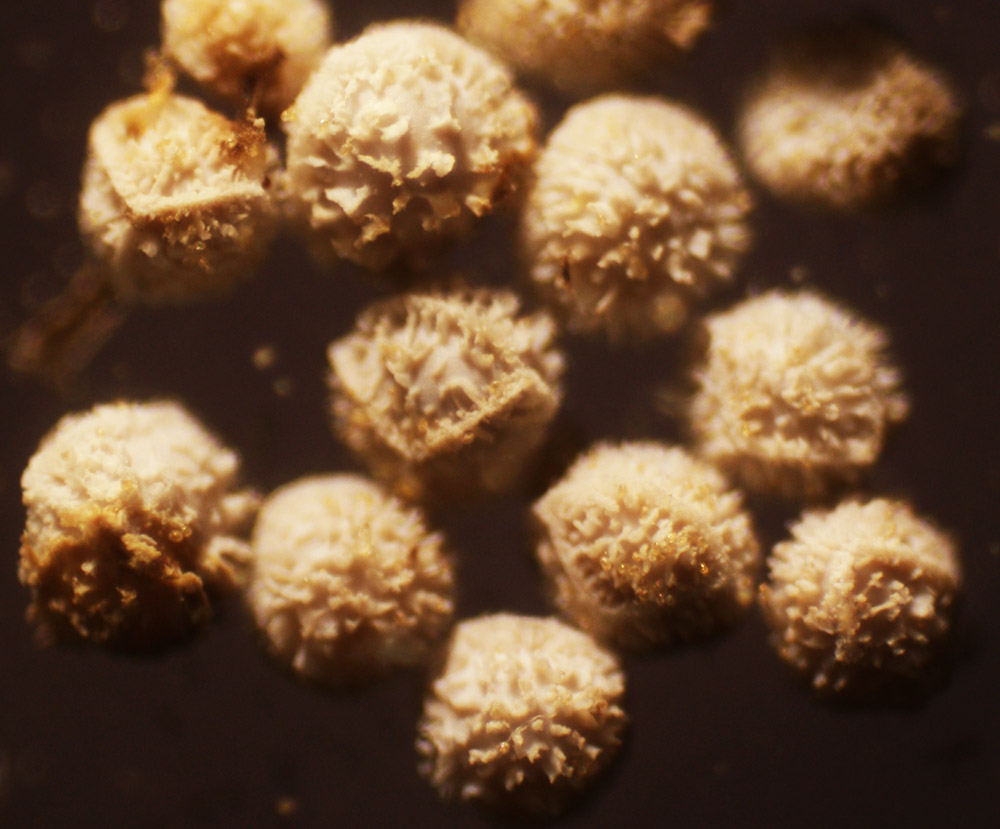
Figure 3.
Dry-mounted macrosporangia of Isoetes dodgei, prepared by T.C. Palmer (see Figure 1). Images with a 3.5x objective lens and a C-mounted digital SLR camera.
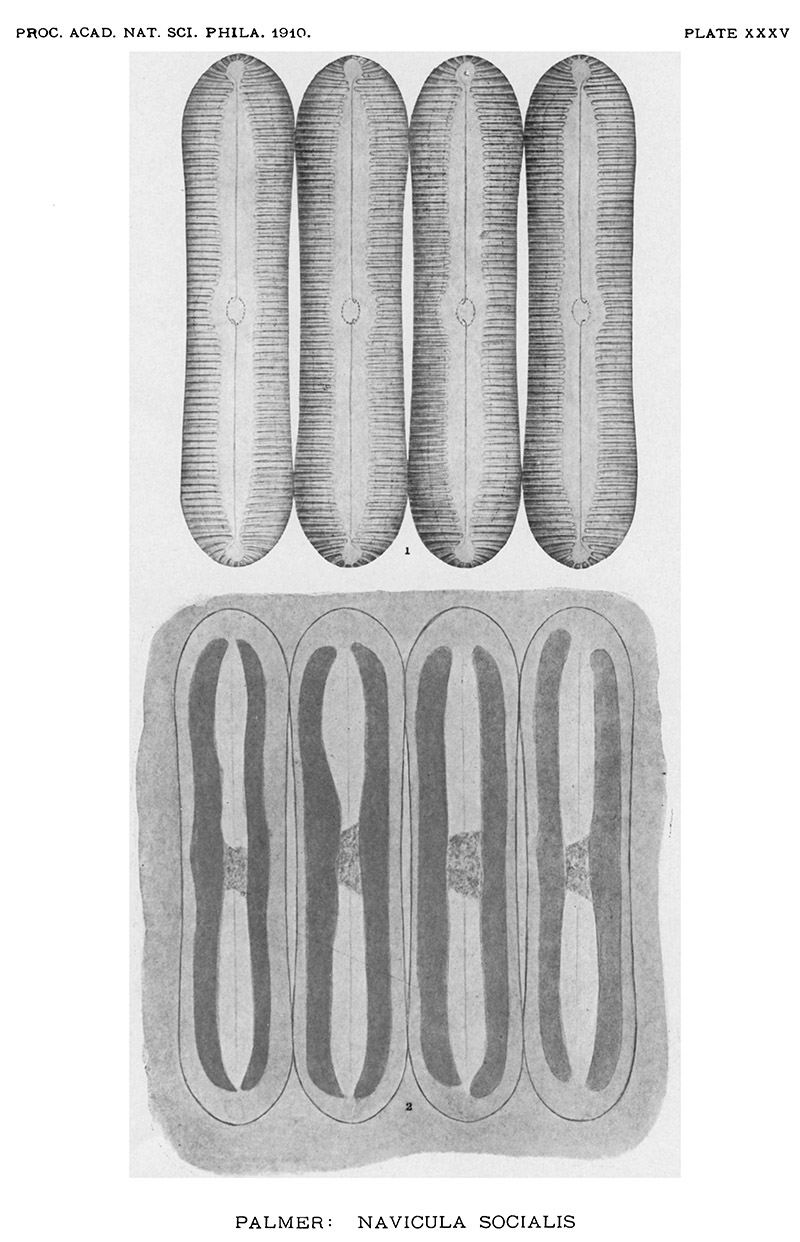
Figure 4.
T. Chalkley Palmer isolated and named Navicula socialis (now Pinnularia socialis) in 1910. The diatoms adhere in clusters, which he illustrated in his initial description of the species. Brian Bracegirdle's "Microscopical Mounts and Mounters" shows a slide by Palmer of N. socialis in Plate 29-B, although he misread the date that Palmer wrote on the slide label.
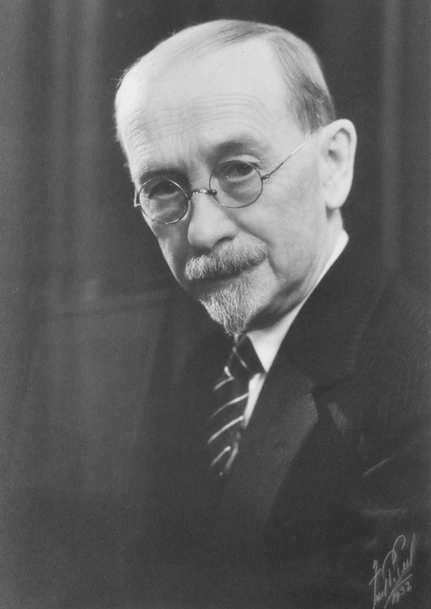
Figure 5.
An undated photograph of T. Chalkley Palmer.
Thomas Chalkley Palmer was born on October 23, 1860, in Media, Pennsylvania, to Lewis and Mary (née Wildman) Palmer. His life is probably best told by those who knew him:
In 1904, Cope and Ashmead published a history of the region around Palmer's home town, and presumably interviewed him for this personal history:
"Prominent among the leading and influential citizens of Media, Delaware county, Pennsylvania, where his birth occurred October 23, 1860, is T. Chalkley Palmer, a son of Lewis and Mary (Wildman) Palmer, who possesses in a marked degree the characteristics that insure success in life-executive ability, exceptional business qualifications, unassailable integrity and steadfastness of purpose.
Lewis Palmer (father) was a native of Beattie's Mills, Delaware county, Pennsylvania, and a descendant of the well known and distinguished Sharpless family, the line of descent being traced through Sarah Sharpless, who was a daughter of Ruth Sharpless. Mr. Palmer was a flour and saw mill owner, conducting extensive operations in a mill located on Ridley creek on the present site of the Media Water Works, and subsequently he turned his attention to the ice business, achieving a large degree of success through his skillful management of this new enterprise. His character and daily life were such as to inspire the confidence and respect of his fellow citizens, and he was chosen to serve as a member of the Media Borough Council. His church connection was with the Society of Friends, and his political affiliations were with the Republican party, of which he was a strong and earnest advocate for many years. He was a noted botanist and mineralogist, and had in his possession one of the finest collection of plants and minerals in Delaware county. For many years he held membership in the Delaware County Institute of Science. …
T. Chalkley Palmer obtained his educational advantages in the Westtown Friends' Boarding School and Haverford College, graduating from the latter named institution in the class of 1882. He became an employee of the Sharpless Dye Works at Chester, Pennsylvania, and in the meantime pursued a special course of study in chemistry at the Philadelphia College of Pharmacy and at the private laboratory of Professor Henry Trimble, of Philadelphia. At the conclusion of his studies he was appointed to the position of chemist at the Dye Works, and since then has been connected with the enterprise in many capacities, being now a stockholder and one of the directors. It is one of the most extensive and profitable enterprises in that section of the state, and conducts business under the name of the Sharpless Dye Wood Extract Company of Chester, Pennsylvania. Mr. Palmer is a member of the Delaware County Society of Science, and succeeded the late John M. Broomall as its president; is a member of the Academy of Natural Science of Philadelphia, the Franklin Institute, Beattie's Mills, Delaware county, Pennsylvania, the Society of Chemical Industries of London, the Society of Dyers of London, and the Chemical Society of Paris. He is recognized authority on dyes and chemicals, and has written many papers upon these and kindred subjects, for the Textile College of Philadelphia, and for the principal trade journal, 'The Journal of the Society of Dyes and Colors', of London, and 'The Franklin Institute Journal of Philadelphia', and in the line of natural sciences for 'The Journal of the Academy of Natural Science' of Philadelphia. He is a member of the Society of Friends.
Mr. Palmer was united in marriage, October 21, 1886, to H. Jane Walters, of Kennett Square, Pennsylvania, a daughter of the late William and Edith (Webb) Walters. Their children are - Walter, born March 30, 1888, and Lewis, born July 28. 1889".
On a more personal note, his friend Frank J. Keeley (1868-1949) wrote the following memoriam upon Palmer's death:
"On February 3, 1934, the old Springfield Friends Burial Ground became last resting place of one whose parting a few days previously left a void life of his friends that can never be filled. Born on the outskirts of Media, Pennsylvania, Thomas Chalkley Palmer spent most of his seventy-three years in that vicinity and was prominently identified with the business and scientific development of Delaware County. After graduating from Haverford College in 1882 and studying chemistry both at the Philadelphia College of Pharmacy and in the laboratory of Henry Trimble, he became the first chemist employed by the Sharpless Dyewood Extract Co. of Chester. He later became Manager and a Director in its successor, the American Dye- wood Co., from which he retired after holding this position for twenty years. In 1884 he was married to Hannah Jane Walter and had two sons, Walter and Lewis, who survive him. He was a Director of the Poor of Delaware County, Vice President and Director of the First National Bank of Media and a Director of the Delaware County National Bank of Chester. So much did he feel the responsibility of these positions that it was almost impossible to induce him to take even a week's vacation during recent years when the banks required particularly careful management.
His boyhood interest in nature was encouraged by his father, Lewis Palmer, a mineralogist and botanist, in whose company he spent his spare time collecting plants and minerals. In later life his greatest interest centered in such organisms as required microscopical investigation; but he had a wide knowledge of nature in general which qualified him as an ideal leader for the scientific excursions that were his chief recreation. He seemed to be acquainted with every rare plant in Pennsylvania, to know every log especially productive of Myxomycetes, as well as unusual localities for local minerals, so that he became the guide and mentor of many who acquired from him most of their nature lore. While he had a wide circle of friends it was only the few who were favored with close intimacy who could fully appreciate his ability in this direction. He had a keen eye for the right environment even when it presented itself unexpectedly.
We were walking along a valley one day when he remarked that yellow cypripediums should grow in such a place as the adjoining hillside. On climbing it we soon caught sight of a single specimen and shortly afterward nearly a dozen were in sight at once.
On those occasions when he was definitely looking for a certain plant he had a way of 'setting his eye' as he called it, after which he rarely failed to find what he was looking for. Many years ago he decided that Ophioglossum ought not to be as uncommon as it was supposed to be in Delaware County and undertook to hunt for it. Selecting suitable locations and 'setting his eye', he soon discovered several new stations for it. Similarly I have been with him when he found new locations of Asplenium pinnatifidum, A. ebenoides, and Lygodium in eastern Pennsylvania.
Among the recollections of an almost lifelong friendship I remember none more striking than the following. We had climbed a rocky hill on the Maine coast and had sat down to rest. After enjoying the view for a few moments I turned to find him examining some dried sticks caught in a crevice of the rocks. 'Surely you are not looking for Myxos on a dry, bare hilltop like this', I remarked. To which he replied, 'No, I'm not looking for them; I'm finding them', and handed me a twig containing sporangia of Physarum.
While the study of nature out-of-doors chiefly appealed to him, he was equally proficient in preparing and investigating microscopical specimens, not merely morphologically but with respect to life history and vital functions. At a time when the vegetable nature of diatoms was still disputed, his neat demonstration that they emanated oxygen when exposed to light as a very neat one. His observation of the presence of raphes at the ends of frustules of Eunotia served to account for the peculiar movements of some species of this genus. Most important of all was his discovery of the true structure of diatom-girdles. These had been regarded as completely silicified, closed hoops, which, when subdivision of the frustules occurred, would necessitate continuous reduction in size as the new valves were developed within the old girdle. His investigations demonstrated that each girdle consists of two or more open siliceous hoops, held together only by organic matter and therefore capable of sufficient expansion to permit the possibility of repeated subdivision without reduction in size.
In addition to his study of Diatomaceae, Chalkley Palmer was the outstanding authority on the algal genus Trachlomonas and the pteridophytic family of the Isoteceae. It was in connection with the last family that his work was best known to the members of the Philadelphia Botanical Club.
For nearly forty years he was President of the Delaware County Institute of Science, and in his later years he had his laboratory at its museum in Media. At one time he was Director of the Microscopical and Biological Section of the Academy of Natural Sciences, and when this section was reorganized as the Leidy Microscopical Club he became the Club's curator. Most important of all, he was for several years the President of the Academy of Natural Sciences itself. He was a member of numerous scientific organizations, including the Royal Microscopical Society, the Franklin Institute, and the Philadelphia Botanical Club".
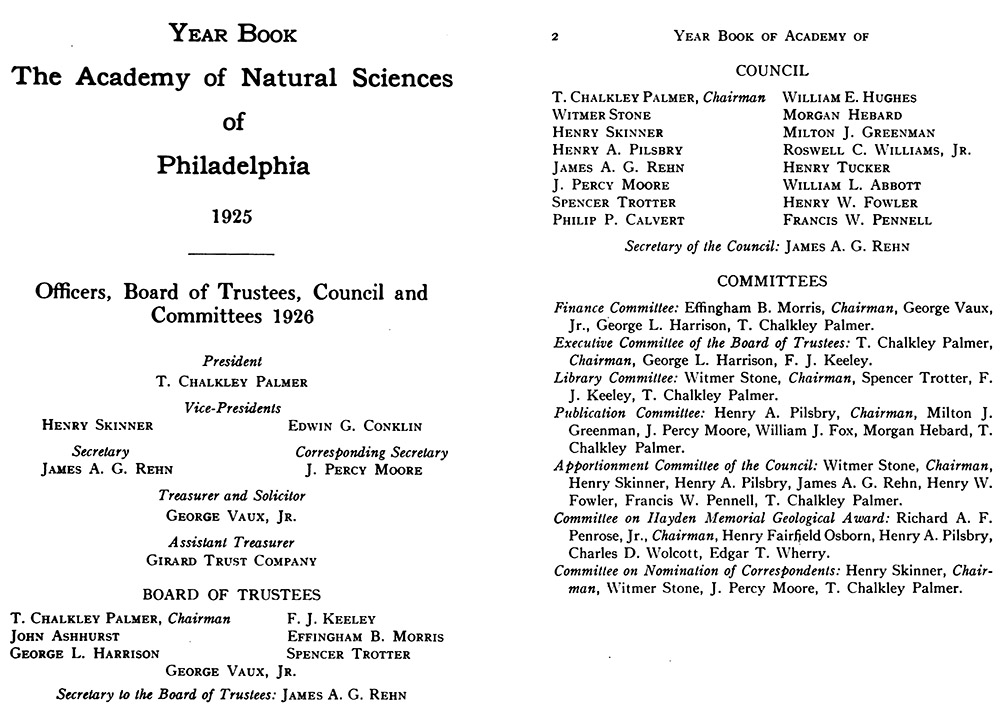
Figure 6.
List of officers of the Academy of Natural Sciences of Philadelphia for 1925. Chalkley Palmer served as President and a member of several committees.
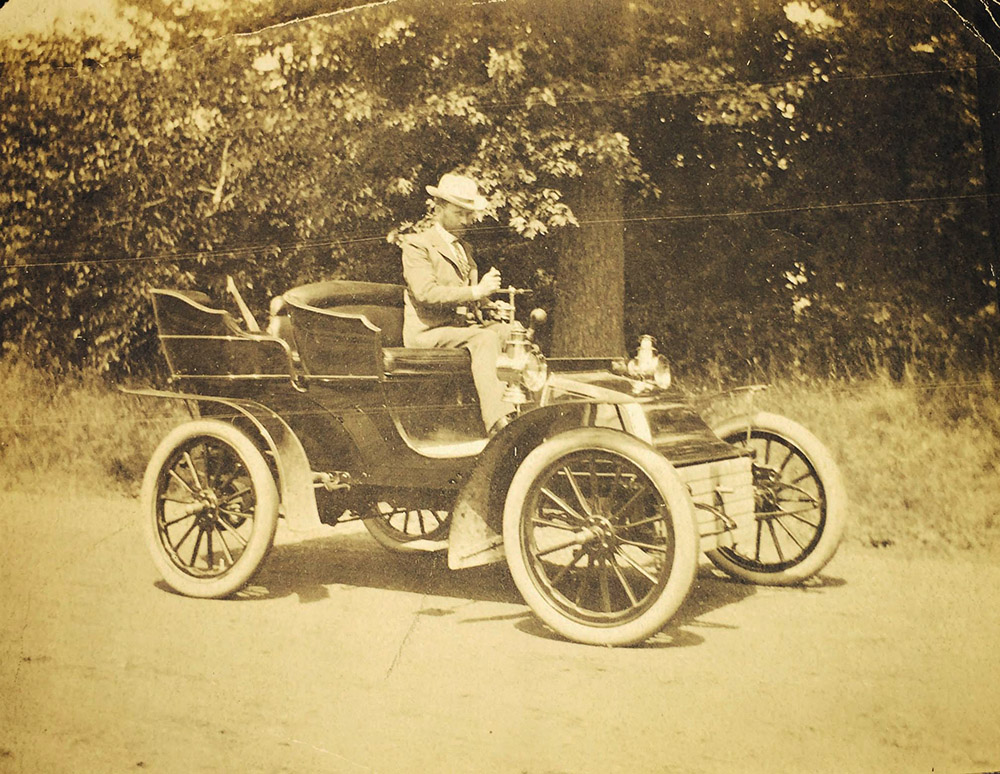
Figure 7.
An undated photograph of T. Chalkley Palmer. Adapted for nonprofit, educational purposes from https://www.facebook.com/glenprovidencepark/posts/3726629524015458
Resources
Ancestry.com
Bracegirdle, Brian (1998) Microscopical Mounts and Mounters, Quekett Microscopical Club, London, pages 74 and 162, and Plate 29-B (note: the illustrated slide is actually dated 1910)
Chester Times (1934) Death claims T.C. Palmer, noted scientist, succumbs to pneumonia at his home in Middletown Township, prominently identified with study of chemistry; was 74 years old, January 31 issue, page 1
Cope, Gilbert, and Henry Graham Ashmead (1904) T. Chalkley Palmer, Historic Homes and Institutions and Genealogical and Personal Memoirs of Chester and Delaware Counties, Pennsylvania, Vol. 1, Lewis, New York, page 430
Keeley, Frank J. (1934) T. Chalkley Palmer, Bartonia, Vol. 16, pages 59-61
Palmer, T. Chalkley (1897) Demonstration of absorption of carbon dioxide and the generation of oxygen by diatoms, Proceedings of the Academy of Natural Sciences of Philadelphia, Vol. 49, pages 142-144
Palmer, T. Chalkley (1898) Observations on errant frustules of Eunotia major, Proceedings of the Academy of Natural Sciences of Philadelphia, Vol. 50, pages 110-119
Palmer, T. Chalkley (1910) A new diatom. Proceedings of the Academy of Natural Sciences of Philadelphia, Vol. 62, pages 460-463
Year Book of the Academy of Natural Sciences of Philadelphia (1925) pages 1-2






